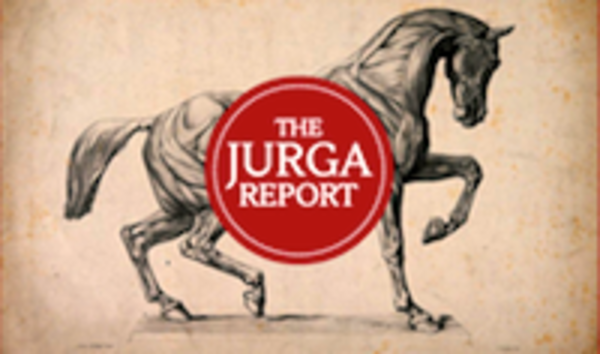
What means more to a young horseman or horsewoman than competing in the state 4-H finals? Minnesota youth exhibitors were prepared for their annual show this weekend, but the euphoria of pampering and prepping their project horses was marred by harsh reality when a horse was euthanized on the grounds after exhibiting what the University of Minnesota Equine Extension Program called “neurologic symptoms”.

UPDATE: On Wednesday, September 23, the University of Minnesota Equine Extension Program reported that test results had been received on the dead horse. The horse tested negative for Equine Herpes Virus Type 1 (EHV-1). However, there was no indication of what, if any, diagnosis had been made. Advice in this article about biosecurity precautions remains in effect.
The Minnesota Board of Animal Health has not released an official statement about the tragedy. Extension oversees horse 4-H in the state, and made the announcement. No details are available about the nature of the symptoms or the possible link to any disease, but exhibitors were warned to take extra care and judiciously practice biosecurity measures at the show and upon their return home.
The Minnesota Horse Expo, held at the same facility, was cancelled in 2014 because of an outbreak of Equine Herpes Virus in the region. On the other side of the grounds this year, the poultry shows, including the 4-H show, were cancelled in response to a directive from state animal health authorities.
A ban on poultry and bird gatherings is currently in force across the state, as nearly 90 Minnesota farms have been impacted by H5N2 highly-pathogenic avian influenza (HPAI) since March 2015.
According to Extension information, the unidentified horse was euthanized on September 18, the first day of the show. More than 600 horses had qualified for the show, which is held in the State Fairgrounds Coliseum in St. Paul and is the largest youth horse show in the state. The event immediately follows on the heels of the Minnesota State Fair and its large 12-day horse show for pleasure and draft horses. The Fair website states that 1.78 million people attended the fair this year.
Television news reports stated that show officials cancelled some events, such as the Grand Entry and the drill team events, because of the possibility of disease risk; those events involve a large number of horses in the arena at the same time.
Anoka Equine Veterinary Services in Anoka, Minnesota notified clients of the situation at the fairgrounds, but cautioned that neurologic symptoms can have many causes. Diagnostic tests on the dead horse are underway, and results will possibly be available later this week.
“While neurologic signs are associated with a strain of EH -1 they are also associated with MANY other medical possibilities,” the clinic announcement stated.
Both the Extension officials and Anoka Equine advised owners of animals that had been in St Paul to isolate their horses when they return home from the show, which ends today, and to practice precautionary biosecurity measures.
Extension recommends following these seven steps to prevent possible spread of any disease:
- work with your veterinarian to ensure horses are current with recommended vaccines;
- keep sick horses at home. Watch for signs of fever, nasal discharge and diarrhea;
- wash your hands frequently! Bring water, soap, hand sanitizer, and paper towels with you;
- clean and disinfect stalls at fairgrounds and show facilities. Spray‐on commercial disinfectants are readily available. Diluted bleach (8 ounces bleach to 1 gallon of water) is an inexpensive disinfectant, but works best on a surface that has been thoroughly cleaned;
- do not share feed and water buckets, hay bags, grooming tools, tack, or manure forks. Disinfect these items after arriving home from an event;
- limit exposure. Do not allow horses to have nose to nose contact and limit the general public’s contact with your horses and your contact with other horses;
- upon returning home from a show, wash your hands, shower, and change clothing and shoes before working with horses kept at home. Isolate returning horses from resident horses for 21 days. Monitor horses daily for signs of fever, nasal discharge, and diarrhea.








